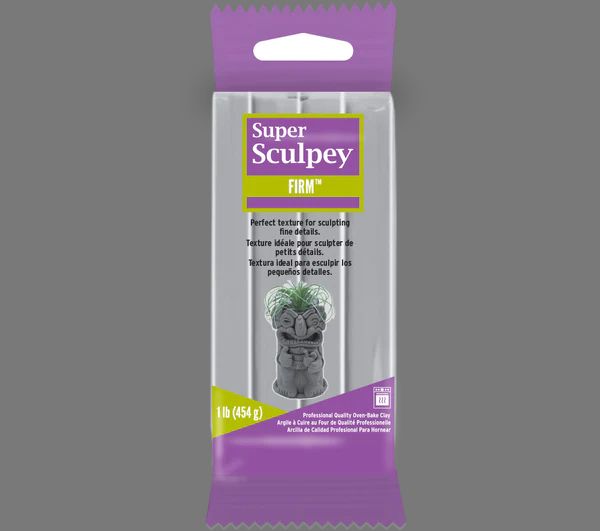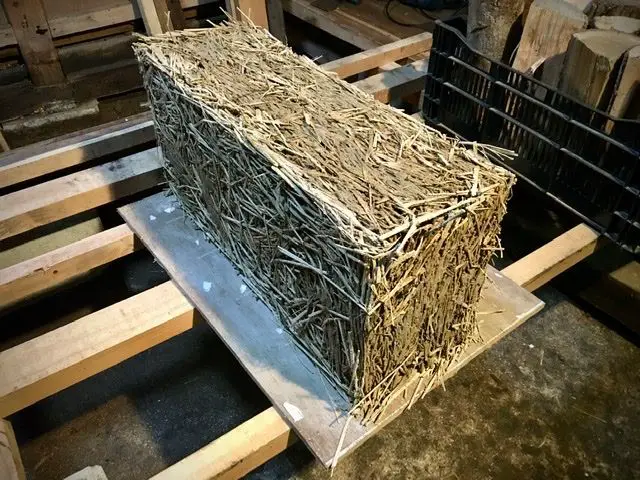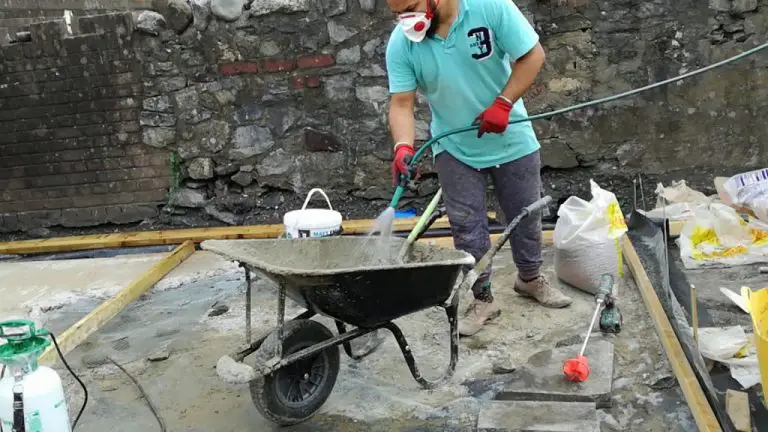How Do You Make A Custom Clay Cutter?
A custom clay cutter is a reusable tool used to cut shapes and designs out of modeling clay or polymer clay. These cutters allow you to personalize clay projects by creating custom shapes that may not be available with standard clay cutters.
Custom clay cutters are great for making your own stamps, charms, pendants, earrings, buttons, and other clay crafts. The main benefit of custom cutters is that you can create any shape you want rather than relying on basic shapes like circles, hearts, or stars.
Making your own custom cutter requires some simple materials, basic tools, and creativity. With a custom cutter, you’ll be able to add your own personal touch to clay projects. Read on to learn how to make a custom cutter suited to your unique clay crafting needs.
Materials Needed
To make a custom clay cutter, you will need the following materials:
-
Clay cutter handle – This can be made from wood, acrylic, or thick cardboard. The handle should be around 4-6 inches long.
-
Clay cutting blades – These are thin metal blades that can cut through clay. Look for ready-made blades or cut your own out of thin metal sheets.
-
Clay – Any air-dry or polymer modeling clay will work. Make sure you have enough clay for testing out the cutter.
-
Glue – Use a strong adhesive like super glue or epoxy to attach the blades to the handle.
-
Sandpaper – This is useful for smoothing the handle and any cut clay edges.
-
Acrylic paint and sealant (optional) – For decorating the handle if desired.
Gather these materials before starting to make the custom clay cutter.
Design the Shape
The first step in making a custom clay cutter is deciding what shape you want the cutter to be. This is where you can get really creative! Consider making a simple shape like a circle, square, triangle or heart. Or, design a more intricate shape like a snowflake, star, letter of the alphabet or even an animal or object. Sketch your design on paper first to finalize the shape and size.
Some tips for designing your custom clay cutter:
- Make sure the shape is not too complicated. Avoid tiny details or thin sections that may be difficult to cut out of clay.
- Consider the size. A larger cutter is easier to handle than a tiny delicate shape.
- Keep interior cut-outs in mind if you want holes in the middle of your shape.
- Remember the shape will be mirrored when cutting, so designs that are symmetrical will work best.
Once you have your shape ready, draw it to scale on paper and make sure it is the exact size you want. This will serve as the template for cutting your clay. Get creative and have fun designing your very own custom clay cutter!
Make the Handle
The handle is a key component of your custom clay cutter. This is the part you will grip while using the cutter to make designs. When making the handle, it’s best to use polymer clay since it can be molded into any shape and baked for hardness.
Start by taking a piece of polymer clay and kneading it briefly to soften. Form the clay into the shape you want for the handle such as a simple round cylinder or something more ergonomic. Add indentations for finger grips if desired.
Make sure the handle is large enough to grip comfortably but not overly large. Aim for a size of around 1-2 inches long and .5 inches in diameter. Smooth the surface gently with your fingers to even it out.
Once you are happy with the shape, bake the polymer clay handle according to the clay manufacturer’s instructions. Baking will harden the clay so the handle will be durable when using the cutter. Typically, polymer clay is baked at 265 to 275°F for 15 to 30 minutes.
After baking and cooling, the polymer clay handle will be ready to attach to the cutter blade and complete the tool. Having a comfortable, customized handle makes using your unique clay cutter much easier and enjoyable.
Attach Blades
Once your handle is securely formed and allowed to fully harden, it’s time to attach the blades. For this step you’ll need strong craft glue or epoxy along with your prepared blades.
Start by adding a thin layer of glue or epoxy along the top edge of the handle where you’ll be affixing the blades. Use a toothpick or skewer to spread the glue evenly across the surface.
Next, carefully press the prepared blades into the glue, keeping them aligned and evenly spaced. Make sure each blade is fully contacting the glue and handle beneath. Use tissue or a paper towel to wipe away any excess glue that squeezes out.
Allow the glue attaching the blades to cure completely based on drying times, usually 24 hours. The blades must be fully secured before using your custom clay cutter.
Test the Cutter
After creating your custom clay cutter, it’s time to test it out. This is an important step to make adjustments and ensure your cutter works properly before making final projects.
Take a slab of polymer clay and lay it on your work surface. Carefully press the cutter down into the clay, applying even pressure. Try not to twist the cutter as you press down. If the blades are sharp, they should slice through the clay without resistance.
Lift the cutter straight up to reveal the cut shape in the clay. Examine the edges – they should be clean and smooth with no jagged areas. If the edges are rough, you may need to sharpen or smooth the cutter blades.
Test a few more cuts, trying different amounts of pressure and angles. Adjust your technique until you can easily make clean cuts. Pay attention to any sticking or dragging which indicates an issue with the blade smoothness or clay softness.
Testing on sample clay is a quick way to identify any problems with the cutter before starting important projects. This helps ensure you get great results right from the start when using your custom tool.
Troubleshooting
If you run into issues with your custom clay cutter not working properly, there are a few things you can try to fix it:
Cutter is not cutting cleanly: The most common problem is the cutter not slicing smoothly through the clay, leaving ragged edges. This is often caused by dull blades. Try replacing the blades with new, sharp ones. Make sure to use blades specifically meant for cutting polymer clay. You can also try lightly sanding the blades to sharpen them.
Blades keep falling out: If the blades are not staying firmly attached to the cutter handle, check that you have used strong adhesive like E6000 glue. Rough up the surface of the handle with sandpaper so the glue adheres better. Make sure to let the glue cure fully before using the cutter.
Handle is uncomfortable: If the handle feels awkward or painful to hold, you may need to adjust the shape or size. Add polymer clay and sculpt it into a shape that fits your hand better. Build up the handle and smooth it out for maximum comfort.
With some tweaking and adjustments, you should be able to get your custom clay cutter working smoothly. The most important thing is taking the time to get the blades properly sharpened and firmly adhered.
Make Designs
Now that you have your custom clay cutter created, it’s time to make some cool designs! Start by rolling out your clay into a flat, even sheet using a rolling pin or acrylic roller. The thickness will depend on the type of clay you’re using and your desired finished product, but 1/4 to 1/2 inch is a good starting point.
Gently press your clay cutter into the clay at different angles to cut out shapes. You can cut straight down for a clean impression or twist slightly for a more rounded edge. Experiment with different directions and pressure levels to get a feel for your new tool.
To cut out intricate patterns, partially press the cutter into the clay so only the tips of the blades pierce through. Carefully slide the cutter through the clay to create dotted lines or perforated designs. You can also rock or twist the cutter while pressing to make wavy lines and zig-zags.
If any clay sticks to the blades, gently wipe it away with a soft cloth or paintbrush so you can clearly see the sharp edges for the next impression. Rinse the cutter in water as needed if clay residue builds up.
Let your imagination run wild with the custom shapes you can create! Make polka dots, stars, flowers, geometric patterns, letters, animals, logos – anything you can dream up. The unique shape of your custom cutter will give your clay creations special personality. Have fun designing!
Finishing Touches
Once your custom clay cutter is fully assembled and tested, it’s time to add those finishing touches. Smooth out any rough or sharp edges using fine grit sandpaper. Be gentle and take your time to avoid taking off too much material. You want the edges to be smooth but maintain the original shape.
After sanding, you can decorate your cutter however you like. Here are some ideas:
- Paint the handle different colors
- Glue on beads, buttons, or other embellishments
- Add a coat of sealant like polyurethane for gloss and protection
- Wrap the handle in yarn, fabric, or lace
- Use a woodburning tool to add designs
Get creative with the finishing touches to make your custom cutter truly unique. The decorations don’t need to be over the top. Even just painting the handle or adding a charm can give it some personalized flair.
Caring for Your Cutter
Properly caring for your custom clay cutter will help it last longer and keep it in good working condition. Here are some tips for cleaning, storing, and maintaining your cutter:
Cleaning
– Wash with soap and warm water after each use to remove any clay residue. This prevents buildup.
– Use an old toothbrush to scrub the blades and get into crevices.
– For stuck-on clay, let the cutter soak in warm soapy water to loosen it before scrubbing.
Storing
– Allow the cutter to dry fully before storing to prevent rusting.
– Store in a dry, room temperature location out of direct sunlight.
– Consider covering the blades with parchment paper to prevent dulling.
– Store vertically in a cup or pencil holder rather than laying flat.
Maintenance
– Apply mineral oil periodically to condition the wood handle.
– Sharpen or replace dull blades as needed to keep cuts crisp.
– Check that all screws and joints are tight.
– Refinish or revarnish the handle if it gets banged up.
With proper care, your custom cutter can stay in good shape for many years of clay crafting.



